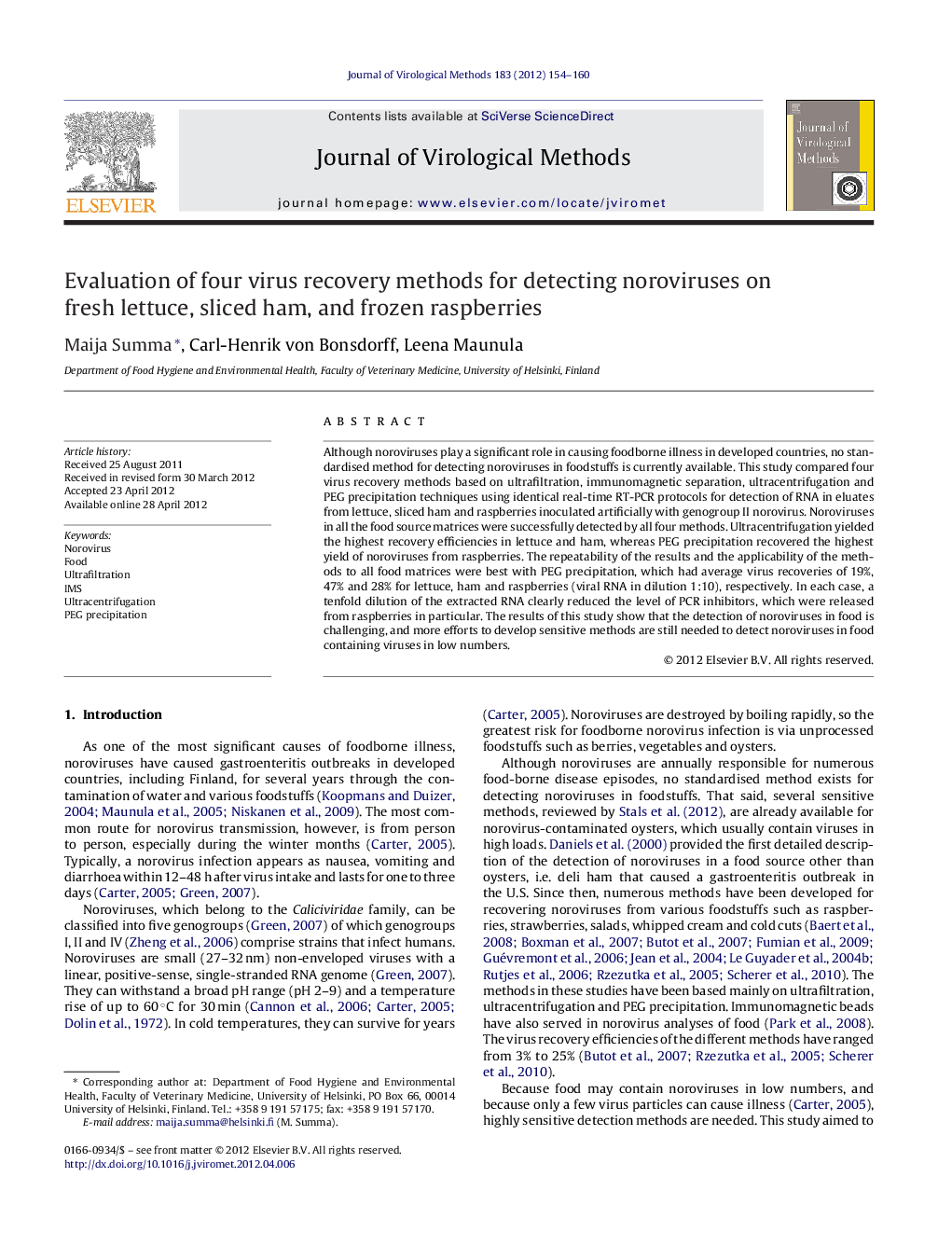| Article ID | Journal | Published Year | Pages | File Type |
|---|---|---|---|---|
| 3406769 | Journal of Virological Methods | 2012 | 7 Pages |
Although noroviruses play a significant role in causing foodborne illness in developed countries, no standardised method for detecting noroviruses in foodstuffs is currently available. This study compared four virus recovery methods based on ultrafiltration, immunomagnetic separation, ultracentrifugation and PEG precipitation techniques using identical real-time RT-PCR protocols for detection of RNA in eluates from lettuce, sliced ham and raspberries inoculated artificially with genogroup II norovirus. Noroviruses in all the food source matrices were successfully detected by all four methods. Ultracentrifugation yielded the highest recovery efficiencies in lettuce and ham, whereas PEG precipitation recovered the highest yield of noroviruses from raspberries. The repeatability of the results and the applicability of the methods to all food matrices were best with PEG precipitation, which had average virus recoveries of 19%, 47% and 28% for lettuce, ham and raspberries (viral RNA in dilution 1:10), respectively. In each case, a tenfold dilution of the extracted RNA clearly reduced the level of PCR inhibitors, which were released from raspberries in particular. The results of this study show that the detection of noroviruses in food is challenging, and more efforts to develop sensitive methods are still needed to detect noroviruses in food containing viruses in low numbers.
► Methods for detection of NoV from lettuce, ham and raspberries were evaluated. ► NoV detection from ready-to-eat foods was carried out using real-time RT-PCR. ► Ultrasentrifugation showed the best NoV recovery efficiencies in lettuce and ham. ► PEG precipitation recovered the highest yield of NoVs from raspberries. ► NoV recoveries of 19, 47 and 28% for lettuce, ham and berries were obtained.
